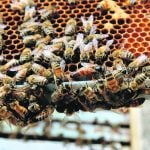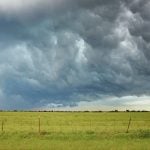$1.3 billlion will be spent on schools, health-care facilities and road building
Saskatchewan residents who had braced themselves for increased taxes and significant spending cuts were likely relieved when finance minister Ken Krawetz tabled the 2015-16 budget last week.
However, some will pay more for items such as medication, and potash companies will contribute more to government coffers.
The government had been signaling a tough budget for months because of sinking oil prices, which have cut revenue by $661 million. It floated the ideas of increasing the education portion of property tax and cutting transfers to municipalities.
However, Krawetz instead an-nounced neither of those would change this fiscal year.
Read Also

U.S. loses out on sales of soybean to China
U.S. soybean exporters risk missing out on billions of dollars worth of sales to China this year as trade talks drag on and buyers in the top oilseed importer lock in cargoes from Brazil.
The budget plans for a small surplus of $107 million on revenues of $14.28 billion and expenses of $14.17 billion. Both of those figures are up 1.2 percent over the previous year.
Health, education and social services spending will take three quarters of the budget, Krawetz said.
The increase in those areas is just less than two percent, while all other government spending is down .6 percent.
“My job as minister of finance was to build a budget that was balanced and would recognize that we needed to still make key investments in people,” he said.
Health-care spending will total $5.5 billion, of which $3.3 billion will go to regional health authorities. As well, $10 million will be directed toward seniors’ care and $4.7 million will be used to reduce emergency department wait times, which is up $3 million from last year.
The education budget is up 2.8 percent to $3.7 billion. School divisions will receive $1.87 billion of that, while post-secondary operations will receive $661.2 million.
A centerpiece of the budget is a four-year $5.8 billion Saskatchewan Builds Capital Plan.
For this year, $1.3 billion will be spent on schools, health care facilities, highways and municipal infrastructure.
However, the government will borrow $700 million at 3.5 percent to finance the projects, leading to criticism that public debt is going up.
The debt will climb by $1.6 billion to $13.3 billion this year. Krawetz said a debt repayment plan is built into the budget.
Key changes in government programs include converting the graduate retention tuition rebate program to 10 years from seven and no longer providing any excess over taxes payable as a refund.
Instead, it will be carried forward and applied to the following year’s taxes.
This will defer government costs and save about $33.5 million per year.
The Active Families Benefit is now income tested, making the $150 per child tax credit available only to those families with combined net income less than $60,000.

















